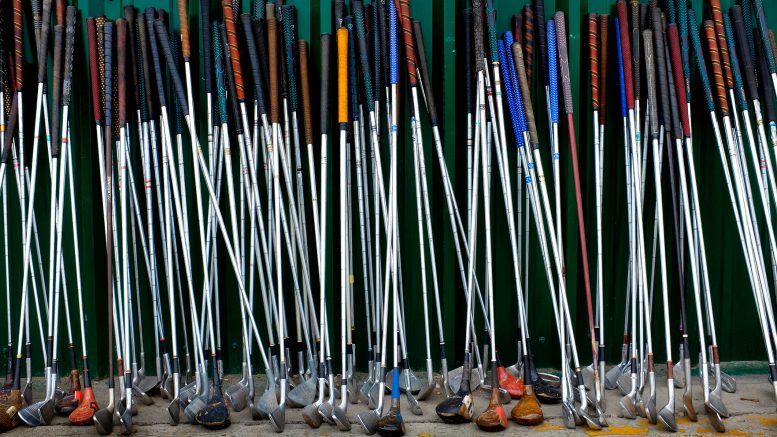It is a difficult time to be an iron ore analyst, especially if you’re also a European golfer.
The 43rd biennial clash between golfing teams from the United States and Europe has just ended, with the Americans handing a thrashing to the team from my side of the pond. I report this without any personal aptitude for the game, having never got past the point where throwing the ball was preferable. In this regard, golf ranks level with tennis, where I always found serving a disadvantage.
The Ryder Cup reminds me of the interview process for metals analysts when I was at S&P Global Market Intelligence (SPGMI). Applicants were frequently asked; how many golf balls are purchased each year? Famously, a similar question used to be asked by McKinsey & Co.; namely, how many golf balls would fit into a Boeing 747?
The point, of course, is not that SPGMI (or McKinsey) was looking for analysts who knew the answer. Rather we are looking for people with an ability to think problems though, and reach appropriate conclusions.
For the record, I remember that one (successful) interviewee was able to look at the big picture because he recalled there were some 35,000 golf courses in the world (which, incidentally, means there is almost one golf course per mining project, at least as was recorded on the SPGMI mining database). Based on utilisation rates, sunny days etcetera, the interviewee reckoned that these courses would each host an annual average of 15,000 rounds. If we exclude crazy golf, he estimated that an average round would see two balls lost, damaged or blamed for poor performance. Say 1.1 billion balls lost or discarded annually, with perhaps ten times that number in circulation.
A second SPGMI interviewee started his calculation with individual golfers, and assumed that one in 150 of the world’s population were likely to play at least one round of golf per year — which is about right globally, although the proportion of golfers rises to one in every 75 Europeans and an astonishing one in every 13 Americans (25 million registered golfers in a U.S. population of 330 million).
This prospective metals analyst suggested that the world’s 50 million golfers might play an average of ten rounds of 100 strokes per year, that is, 50 billion strokes. Assuming a similar total is spent on practice, that would mean100 billion annual swipes at a ball.
Half of this effort, he reckoned, is spent on shots that are hardly likely to result in a lost ball, for example on the driving range or putting. If, of the remainder, one in 100 strokes results in a lost ball, then some 500 million balls need to be replaced each year. This interviewee didn’t get the job as he had failed to take into account those balls bought as presents or replaced by disgruntled golfers (which is likely to at least equal the lost balls).
Whatever their analytical skills, the predicting of iron ore prices is not for the faint hearted at the moment. Covid-19 has made all economic forecasting problematic, and there is added political uncertainty in China, where ten months ago President Xi Jinping launched a left-leaning ‘Common Prosperity’ agenda.
We are yet to see the long-term impact of the crackdown on privately-owned companies and entrepreneurs but Beijing’s curbs on steel output to slow the construction-intensive economy have led to dramatic price falls for iron ore.
Property starts in China are down 9% this year, and Bank of America estimates that construction activity in the country accounts for 29% of global steel and 11% of copper demand, respectively. As a result, the price of iron ore (62% Fe CFR China) has halved over the past two months to under US$100 per tonne. Iron ore and copper markets are gripped, in particular, by the debt crisis at Evergrande Group, which is China’s second-largest property developer.
Goldman Sachs predicts that this year’s shortfall of 60 million tonnes in seaborne iron ore will become a 3 million tonne surplus next year, and perhaps an oversupply of 69 million tonnes by 2024 (when an average price of only US$75 per tonne is predicted). UBS is even more pessimistic, and reckons the market for iron ore is already in surplus.
Reflecting this turmoil, the MSCI (formerly Morgan Stanley Capital International) World Metals and Mining index has been in retreat since May, and the equity index has now shed all of its prior gains for the year.
If only iron ore markets were as easy to predict as the Ryder Cup. Only two of the 11 competitions since 1999 have not been won by the home team — the exceptions being European successes in 2004 at Oakland Hills, Michigan, and the 2012 ‘Miracle of Medinah’ in Illinois.
To put you out of your McKinsey misery; our best guess at SPGMI was 21 million balls to fill the empty shell of a Boeing 747. That equates to the number of golf balls replaced globally every week; shame they are not made of iron.
— Dr. Chris Hinde is a mining engineer and the director of Pick and Pen Ltd., a U.K.-based consulting firm he set up in 2018 specializing in mining industry trends. He previously worked for S&P Global Market Intelligence’s Metals and Mining division.


Be the first to comment on "The View from England: Short iron bogey"